June 2016 Issue
In This Issue
6L80 Front End Upgrades
Allison Cooler Line Fitting Fiasco
VW Jetta Wagon Alleged Engagement Problem
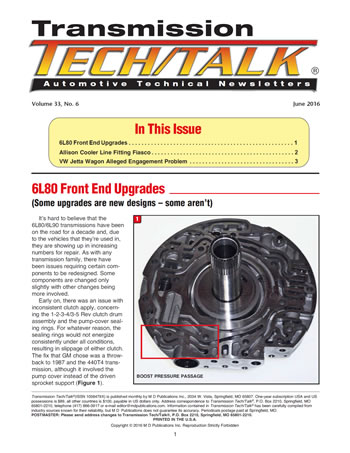
Choose Your Words Carefully
Whether doing business with strangers or longtime customers, the same rules of etiquette need to be applied. We never want to take liberties and feel that we can talk to customers the way we do our golf buddies. People can be easily offended, and it would be a shame to lose sales because our sense of humor doesn’t match our customers’ or because we don’t control the use of inappropriate language. Even if the customer is using off-color words or phrases, we cannot take that as a cue that it’s OK to join in.
Data-Driven Decisions
Sometimes, experience-based information systems can help diagnose a vehicle. I said sometimes because these systems can lead a technician down the wrong diagnostic path. As independent repair professionals, we have an array of information systems to choose from – OEM to aftermarket – but we need the most effective repair path.
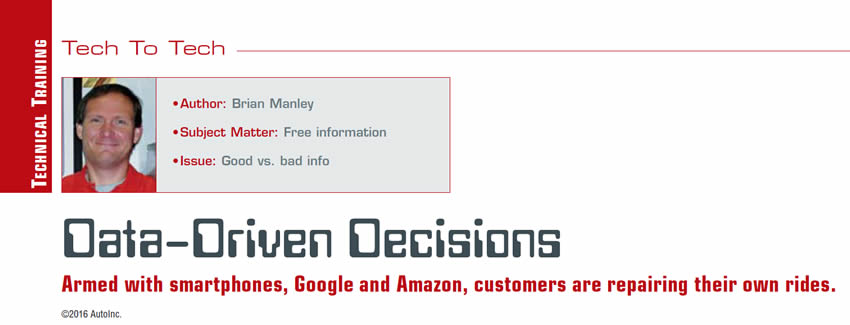
Ford 6F50 – The Other Six-Speed Transmission
When Ford and GM got together to jointly develop the new FWD six-speed transmission family, they apparently agreed upon the basic architecture and operation allowing for the unique requirements of both companies. As they say, however, the devil is in the details. While many of the components of the 6F50 and 6T70 are the same, there are certainly differences due to design or the suppliers used. Although GM decided to designate some of the most noticeable changes to the 6T70 as GEN 1 or Gen 2, the Ford changes are mainly designated by the month and year that they occur. Before ordering replacement components for either transmission family, make sure to specify the precise application.

Diagnosing Electrical Signals
I’ve always had been fascinated by technology and electronics, and I can remember the first time I used a scope. It was in my high school auto-tech class, and we were being intro-duced to ignition waveforms using a Sun Engine Analyzer. I pulled my 1968 Barracuda up to this huge machine with all kinds of leads coming off of this big arm that hung over the engine bay, and everyone in the class was overwhelmed by what was going on. It was amaz-ing to me that my teacher could tell that my points (anyone remember points?) weren’t gapped properly and that I had a bad plug or wire on #3 cylinder simply by looking at the electrical signal on the scope.
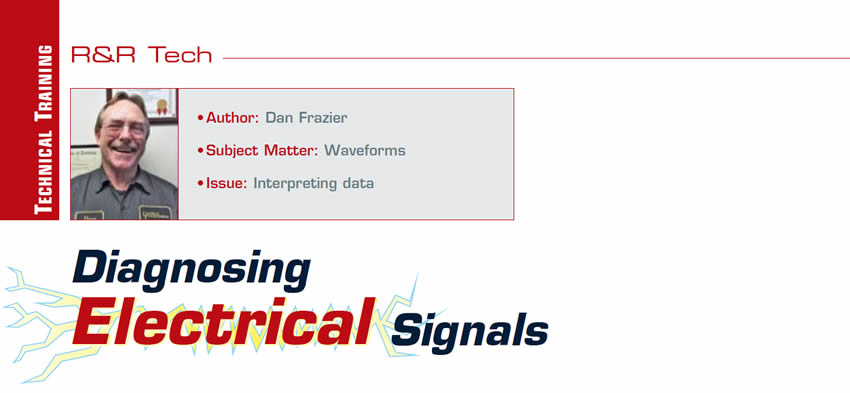
Repeat Problems and Failures
Gauging the traffic and the topics of calls we receive on our tech line make it obvious that many problems result from missed diagnostics and failure to view the issue as part of a complete vehicle system that must interact correctly. The simple truth in our daily routine is that the vehicles we service grow more complicated and complex by the day. Be careful of the quick “rush to judgment” when approaching any customer concern, as the urge to remove and inspect components internally in many cases focuses your attention on the “effect” instead of the cause.
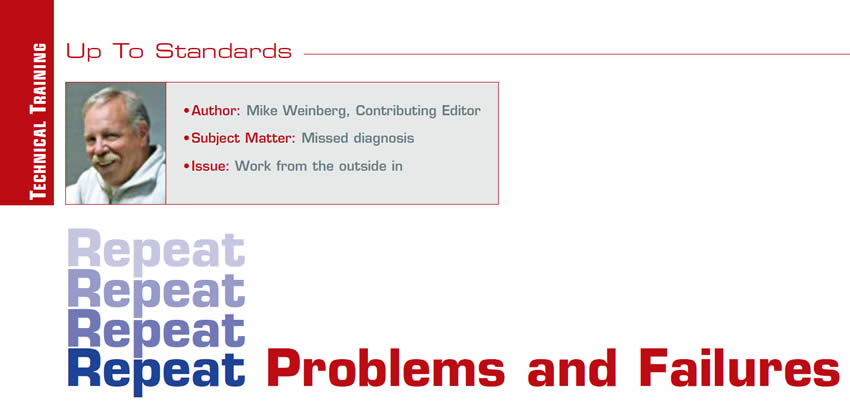
Hold on to What You’ve Got
Most of the time I teach people in our industry how to run profitable businesses by using proper sales and management techniques. Many of you have learned your lessons well and have gone on to build very successful businesses. Your reward for all of your hard work comes in the form of a sense of accomplishment and, of course, money. As good citizens, you’ve paid taxes on the money you’ve made and hopefully put the rest to work to make you more of it. Many of you have invested in real estate, either land, buildings, or both. Others have tried the stock market, bonds, annuities and other business ventures, hopefully all lucrative. Some of you have put your money in banks feeling that even though there wasn’t much to be made, it was safe.

May 2016 Issue
In This Issue
Allison electrical harness upgrades
Nissan Versa that slips and hesitates
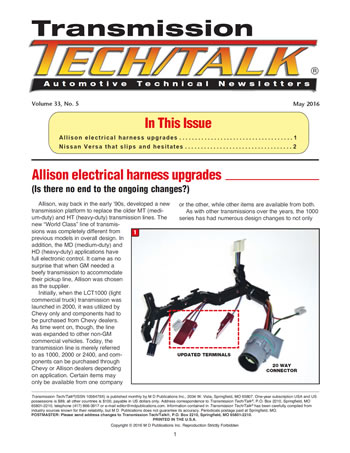
Misinformation forces tech to work harder
As with most of the accounts we’ve shared detailing vehicle symptoms and repairs, electrical issues seem to be the most common root cause. Our subject today involves a 2003 Dodge Sprinter 2500 that showed up at our door with the customer informing us that they could not shut it off since it would not restart without jumping the solenoid on the starter. The gentleman stated it would not start with the key, the shifter would not come out of park and the transmission would not shift. He also stated that we had installed a TCM about a year ago, and because it did not shift, the customer thought it was related to what we had done. He also stated he had replaced the fuse in the fuse panel for the transmission and that didn’t help. Apparently, we needed to diagnose some electrical problems.
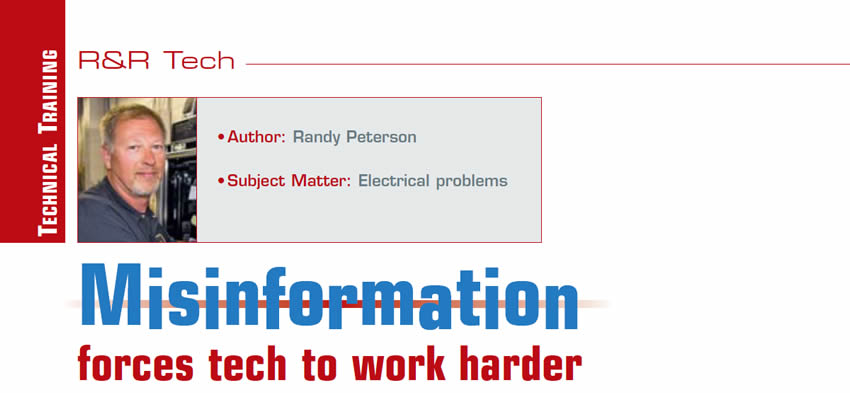
Different Designs for Different Diffs
We work on drivelines for a living. The transmission makes the torque created by the engine into a usable form through steps (gears), the lowest of which transmits the most usable torque, and the highest of which can transmit the most rotational speed. The transmission sends that power to a third member or rear end, or in front-wheel drive, a rear end contained inside the gear box, without a drive shaft. The rear end now transmits the power to the drive axles and wheels, making a 90° turn through the ring and pinion gears. Transmission gears and the rear-end ratios are matched to the power curve of the engine to provide the most fuel-efficient speeds. The ring gear is mounted to a differential carrier, or in many front-wheel-drive transmissions, a planetary-type of carrier. The differential is contained inside the carrier.
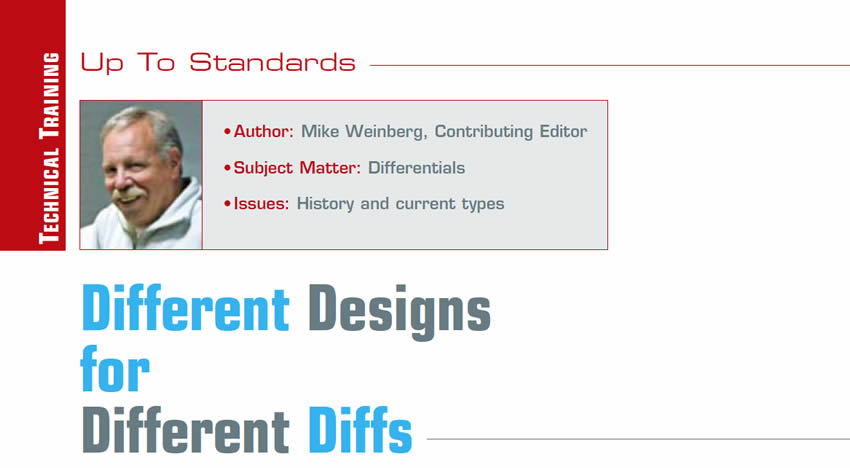
All in the Family
You may have noticed some similarities over the years in regard to a family of Chrysler transmissions that began with the Ultradrive 4-speed automatic in 1989. In its day it was fairly innovative, featuring clutch-to-clutch operation (no bands) and adaptive shift technology. Over time, the basic structure has developed into a variety of different models, some with 5- and 6-speed variations.

Forrest Gump Was Right
Sometimes, bad things happen. Anyone who has not lived in a climate-controlled bubble knows this. Your reaction to an unfortunate series of events is what changes the entire experience.

